|
|
Post by HD Music & Test on Aug 28, 2022 10:23:38 GMT
These are very good Peter, we have a small 200W (heads can be changed for more powerful ones )laser/cutter & welder with cnc control ideal for intricate work has this for about a year almost indepensible. This we have had for aroud the same time and its ideal for proving audiofoolery myths BS
This allows us to print with some serious strong materials as well took some gtting used to though! Geat company to deal with as well
|
|
|
|
Post by petea on Aug 28, 2022 15:10:45 GMT
The cutter / welder looks interesting. What make / model is it?
I have been scoping out a filament printer for the past couple of months and have one in mind. However, I did not look at the MarkForged ones, but will do. They are about 25% cheaper too!
|
|
|
|
Post by HD Music & Test on Aug 28, 2022 15:48:14 GMT
It can also print in carbon fibre as well, just finished project for racing alfa just printed a stat housing and alternator bracket. Also protyped a new dac casework. This is just the personal one in the home lab. We do have larger versions at work. Now this we have about 18 months and its just stunning, though we did spec a dedicated PC for this as well its worth the effort, its stupidly accurate, I scanned a Wadia 25 case with this,produced the gerber files and milled it out at work not much you can't do with this thing.
This Tormach unit we have been using since late April and its crack for me to play about with on new designs.
Though 3D printed carbon small widgets are much easier to produce, but I just love seeing metal flying off everywhere.
THis Keysight DC analyser has also been very useful for first stage testing as well great for battery and turn on current measurmeents, its also a source sink device which can handle up to 600W of load with the correct module its a main frame device with PC advanced analysis software great addition to the lab.
|
|
|
|
Post by HD Music & Test on Aug 28, 2022 16:08:45 GMT
Apologies for gatutious post of test and measurment equipment, this year have re adjust the lab for another 120 square feet of work space some of the current toys in use.
|
|
|
|
Post by petea on Aug 28, 2022 18:57:01 GMT
No need to apologise, Tony. I can look at pictures of workshops all day!  |
|
|
|
Post by ChrisB on Aug 29, 2022 1:01:25 GMT
Another thumbs up for Dualit toasters from me. We bought one sometime around 2004 or 5 and it is still making superb toast. The thing that impressed me when we got it was that if the elements go kaput, you can replace them. This is something I had to do just recently. One of them had failed and thinking I might as well change the lot, I bought enough replacements to make the full set. It was a simple job, needing just a screwdriver. |
|
|
|
Post by MikeMusic on Aug 29, 2022 8:36:46 GMT
Dualit toasters are the tops
|
|
|
|
Post by petea on Sept 19, 2022 15:11:45 GMT
Now I realise that this is going to be of absolutely no interest to anyone else on here, but I was excited about this arriving by DHL this morning so you're going to have to suffer anyway!  This is a rotary stage for a Wild M20 microscope. Okay, it is not the calibrated polarisation stage they also made, but they are very, very, very hard to get hold of (this was just very, very hard!), and mind-numbingly expensive; more than a decent M20 in fact. The M20 is a classic microscope, but still extremely good in terms of optical performance. I have a few of them (as you do) and two main ones in the UK. One is set up for incident illumination and viewing and the other for transmitted (with a wide range of condensers and objectives). I actually have another M20 arriving later this week here in Germany that a gentleman in France was selling. I didn't really need another, but it has the incredibly rare (and effective) PZO (from Poland) phase contrast system fitted that allows you to choose bright-field or dark-field contrast (most other phase contrast systems are bright-field only). This is interesting for me as, apart from the microscopes and their accessories, I also have a collection of (mainly) Victorian slides of diatoms and dark-field phase contrast is useful for them although not quite as useful as interference contrast (IC), which is tricky with the M20 and you need a much bulkier system to use that. I do have several IC systems at work and one here in Germany, but no room for one at home in the UK - mind I don't use the dining that much!  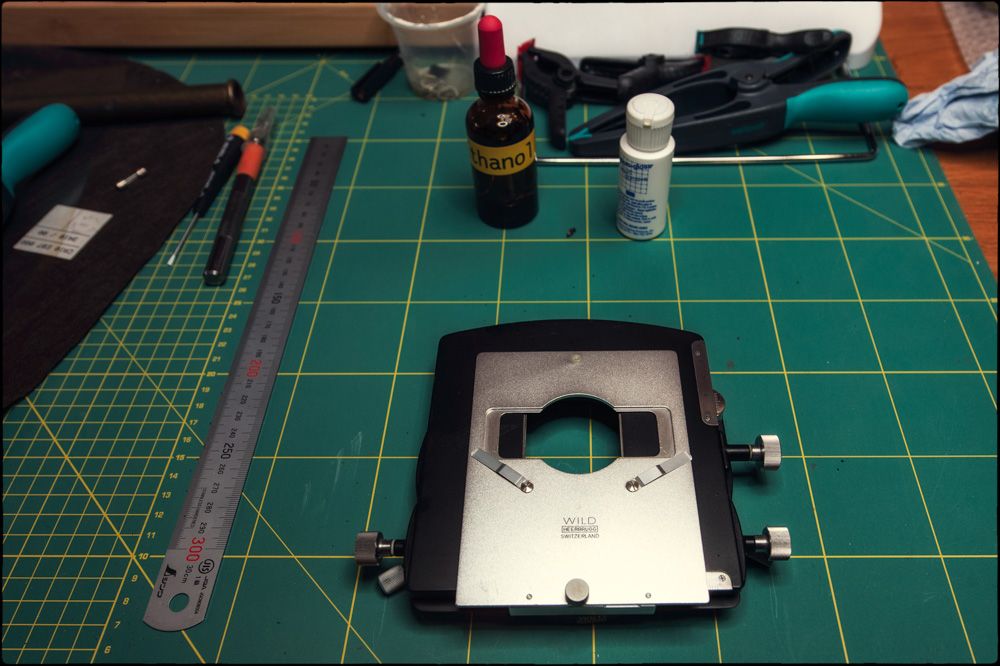 |
|
|
|
Post by petea on Sept 19, 2022 15:14:47 GMT
|
|
|
|
Post by MartinT on Sept 19, 2022 15:39:18 GMT
You can't possibly have space for any more equipment!  |
|
|
|
Post by Slinger on Sept 19, 2022 15:40:23 GMT
There's something about the lines of a more "traditionally" constructed microscope that sends one on a mental scientific journey, and which electronic instruments can never compete with in my mind.
|
|
|
|
Post by petea on Sept 19, 2022 16:33:39 GMT
You can't possibly have space for any more equipment!  Do you want to make a bet?!  |
|
|
|
Post by petea on Sept 19, 2022 17:28:54 GMT
There's something about the lines of a more " traditionally" constructed microscope that sends one on a mental scientific journey, and which electronic instruments can never compete with in my mind. I agree, I have far more 'capable' microscopes and some old and poorly functioning historic ones, but for looking at the old slides at home and as acting a piece of decoration the M20 takes some beating I think. I have a larger microscope in the studio here, but you really wouldn't want it on a shelf in your living room (unless your walls were very strong!). I thought I had a picture of it somewhere, but it seems I don't; I will rectify that! |
|
|
|
Post by petea on Sept 20, 2022 12:29:25 GMT
Apologies: I know many of you have had a sleepless night in anticipation of the photograph I promised yesterday, but you can rest easy now!  As 'promised' (threatened?), here are a couple of pictures of the Reichert MeF2 I have here. It is an inverted microscope - you view the specimen from below and not above as is more usual - and was developed as their flagship materials microscope and this one dates from the late 70s / early 80s. These usually came mounted to a massive console that contained all of the power supplies. etc and alignment rails and drawers designed for all of the various attachments and accessories. They also made stand-alone units. This is not one of those, but one that started life on a console, but that wasn't with it. In some ways that is a shame and I thought at the least I would need to make some alignment rails for the incident lighting system (the bit to the left), but in the end it proved simple to align and unnecessary (and it would have been near impossible to get the console up into the studio). It did come with loads of optics and I later bought a scrap one (from which only a few levers and knobs were salvageable) and another complete unit from which the, rather rare, transmitted lighting unit came (the bit on the top). These microscopes were often used for metallurgy and I have the micro hardness testing unit and the scales etc are calibrated and so it can be used for measuring as well. It has normal bright-field illumination plus dark-field, polarised lighting and differential interference contrast (DIC) and various semi-oblique lighting options. It came with a bunch of analogue cameras and the metering and control systems for them plus the side port for video / cine (and additional stills equipment). Although you can see I have a Sony camera mounted on the large format unit on the front (and have adapters to allow PhaseOne imaging back to mount as well, and of course film) I mainly insert a CCD unit into the side port and the low resolution one is mounted in the picture. As an illustration I have set the instrument up in polarised transmitted mode and put a calibration slide on the stage and fitted a X16 objective. This is imaged on the screen beside it and the small units shown are 10 µm. The highest magnification objectives for this microscope are X160, but are used under oil immersion and it would have been no use for this illustration. Aside from the second (and scrap) MeF2 I also have in the UK a fully equipped Reichert Zetopan (transmitted and incident with conventional and UV illumination) and a Reichert Biovert. The latter is also an inverted microscope, but one geared towards biological specimens and I have been using these two instruments professionally since the early 80s: the Biovert has a superb Nomarski (differential) interference contrast system on it. They don't get used in anger much these days as we do not do as much microscopy and they are complex instruments and the more modern Nikon, Leitz and Leica units are easier to use (kids these days Eh?!). You often find these things on eBay these days for quite reasonable prices although things like DIC fetch high prices. Back in the day you could get quite a nice 3-bedroomed house for the price of a MeF2 on its console, My first was bought on eBay for €1600 and the second came from someone who salvaged it from the microscopy department of British Aerospace when he left at the end of the 90s: he couldn't fit the console into his car! Reichert MeF2 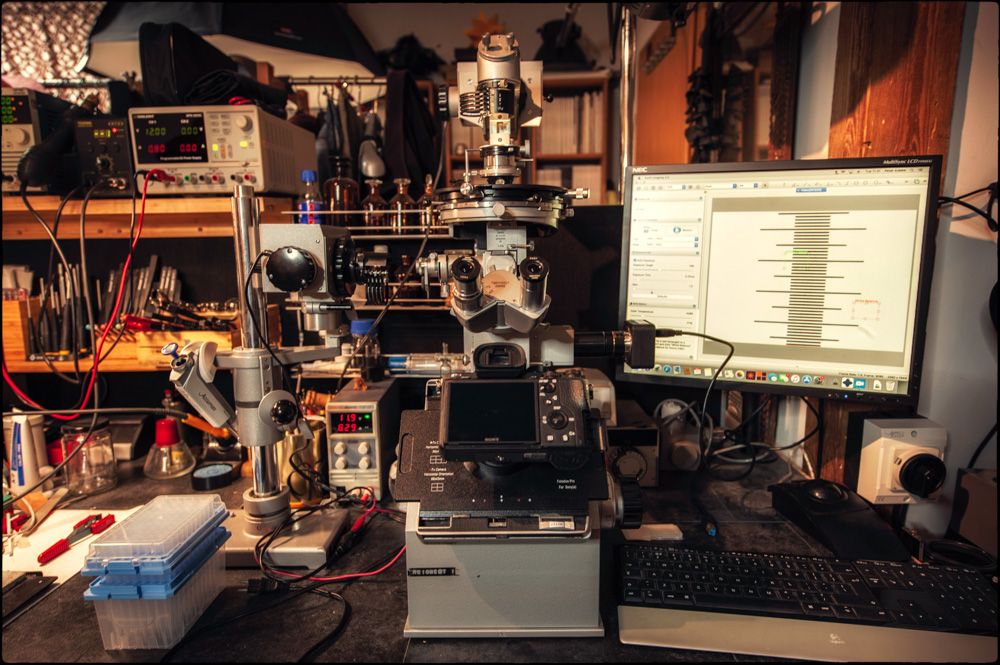 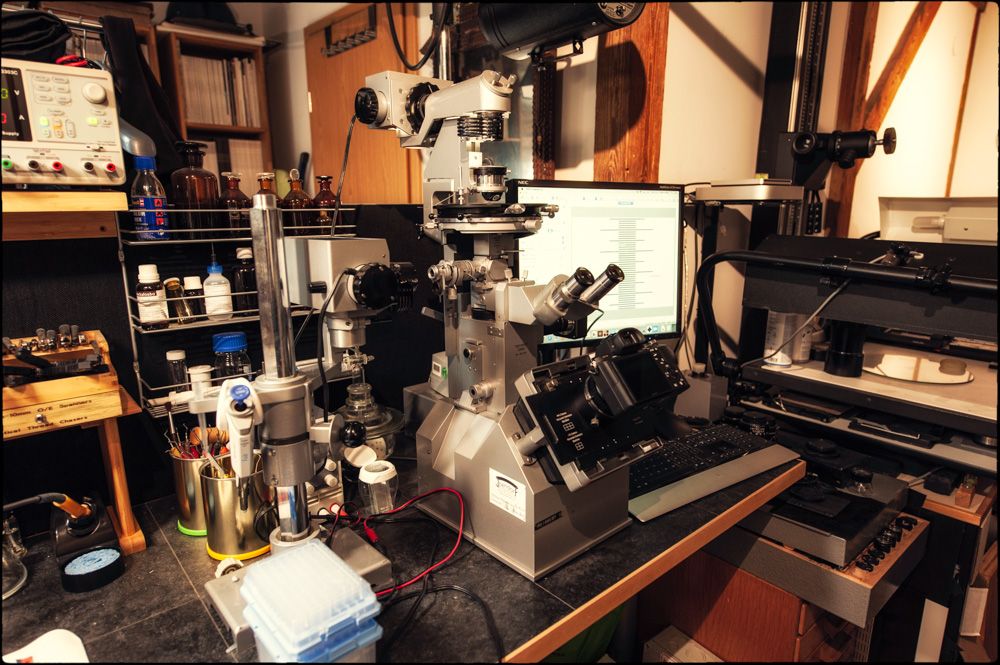 And just because this is a HiFi forum I thought this might be appropriate (taken on MeF2 a while back before I had mounted the CCD). Can you name the tune?  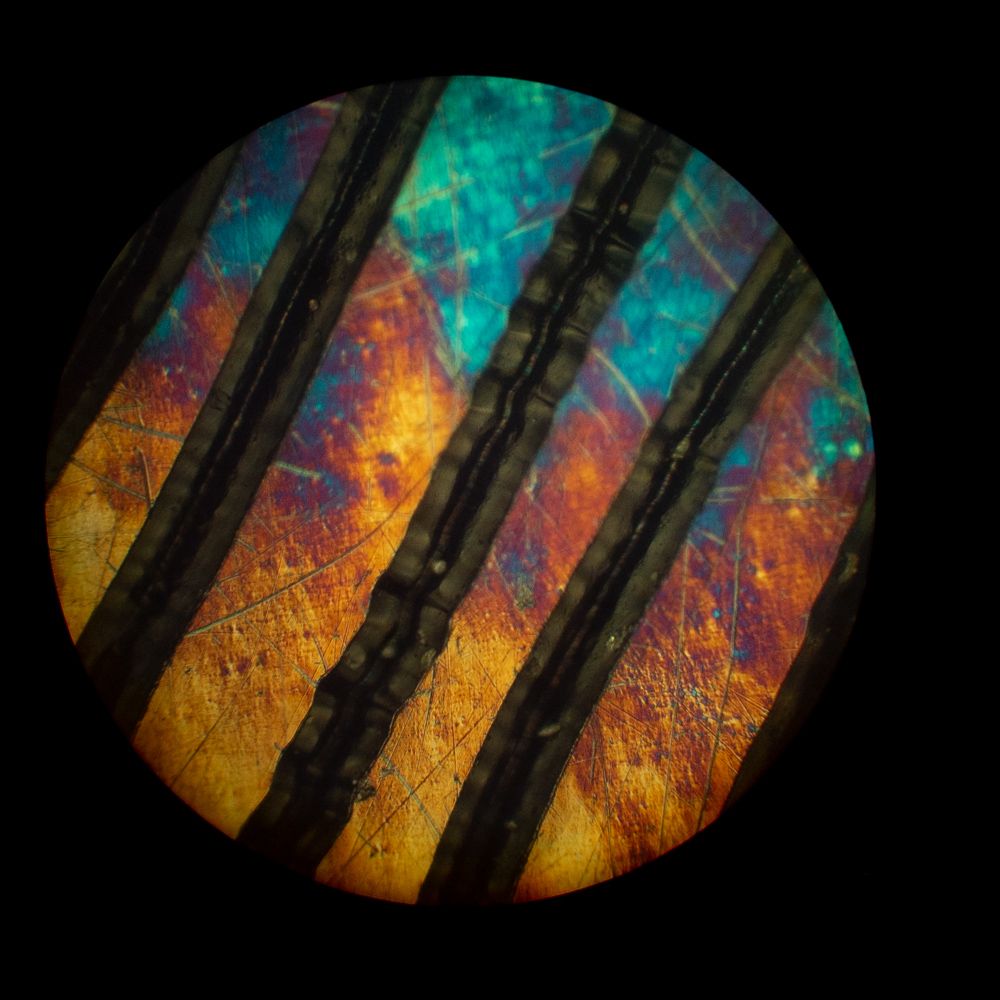 |
|
|
|
Post by petea on Sept 20, 2022 12:30:38 GMT
Incident DIC by the way!
|
|
|
|
Post by MartinT on Sept 20, 2022 13:22:55 GMT
I recognise those wiggles!
They're NOT the Telarc 1812 Overture which is famously virtually unplayable.
|
|
|
|
Post by Slinger on Sept 20, 2022 13:45:56 GMT
Can you pull back a bit, so I can see the chorus?  That is a lovely machine, Pete. If not wall-mounted I can definitely see it standing on a pillar in the living room. |
|
|
|
Post by petea on Sept 20, 2022 14:14:34 GMT
And it's not short of knobs to twiddle and levers to pull either!
|
|
|
|
Post by petea on Dec 29, 2022 16:20:08 GMT
For a while now I have wanted to work out a way to improve the ergonomics of one of my more specialised macro lenses (a Laowa 24mm T1:14 PeriProbe - basically a long thin lens you can poke into small spaces or, with the periscopic elements mounted, shoot at 90º and very close to a horizontal surface: the lower sections are also waterproof). The main issue is of course stability, but from an ergonomic perspective the problem with this specific lens is the awkwardness of the focus ring, and the fact that it is easy to nudge the aperture control while focussing. This is designed primarily as a video lens and so is calibrated with t-stops rather than f-steps and, as is common, these are step-less and so easy to adjust without producing vibration, but also easy to 'adjust' when you don't mean to as well! As the controls are all equipped with standard gear profiles, the obvious solution was to install a follow-focus control, but I didn't want to steal the ones from our main video systems. I was therefore forced (much against my will you understand) to buy some stuff to rig the camera properly, mainly for stills, but also for video should that be required. After some thought, although it was clear that the main priority was focus control, I decided that a way to mount additional lights would be useful (it has ring-lights built-in) plus a focussing rail dedicated to the rig (to allow precise positioning with regards to image magnification). I also wanted to have a way to provide power to the lights on the rig to keep the cables under control). The result is what you see below (although now I have gone this far I might add a cage to the camera (8Sinn in Poland make one dedicated to the SL2-S). I assembled the rig at my desk and so this all looks a bit cluttered, but it will suffice to illustrate what I was aiming at I think. The additional lights, mounted on the arms on the secondary rails are the wonderful cubic LED spots from Relio 2 I have a stack of these and love them (https://www.relio.it/).  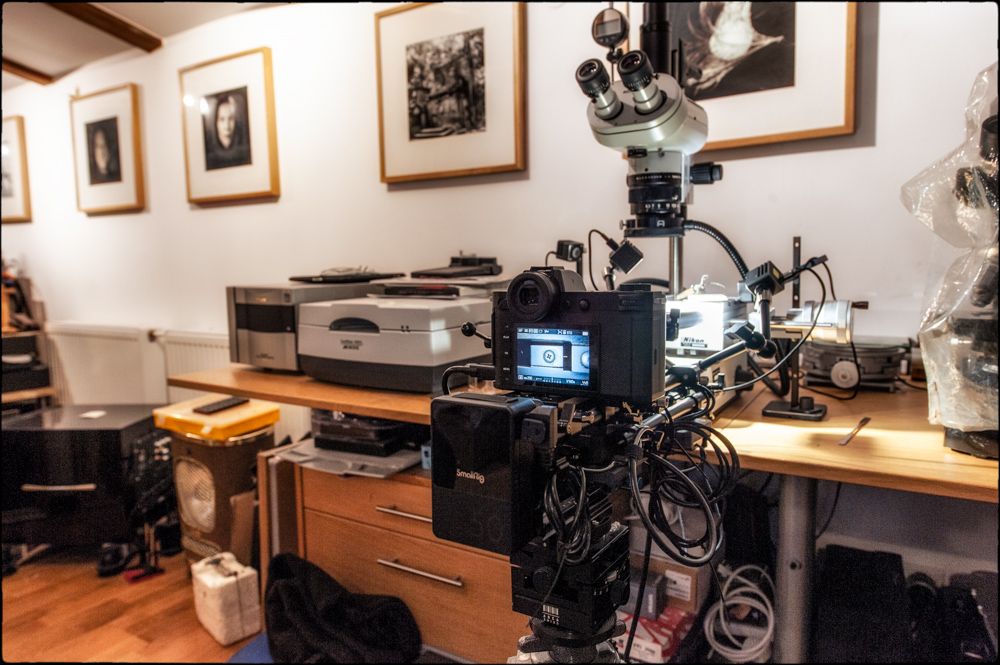 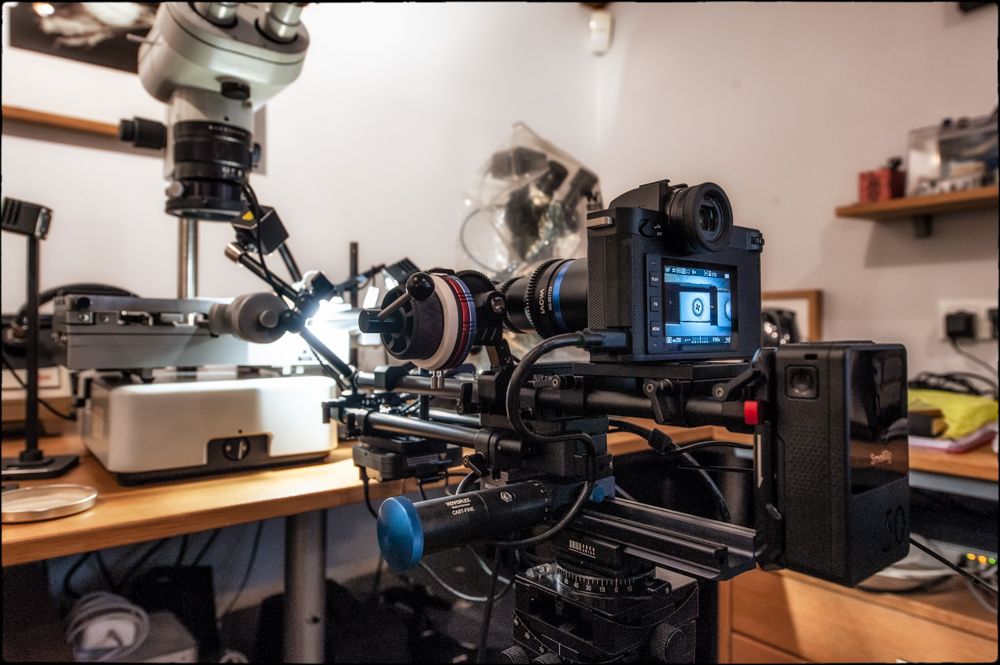 And this is what the lens is looking at: a 6.7 mm diameter screw head on the side of the Nikon positioning stage.  As a technical lens the PeriProbe is far from perfect and is more suited to wildlife photography / videography. It suffers from barrel distortion, but this is correctly easily during post production. Colour is good though and these is no obvious chromatic aberration. However, its reach is pretty unique and its image circle covers a full-frame 35mm sensor with ease, which most endoscopes don't and with better uniformity of light, etc. |
|
|
|
Post by petea on Feb 19, 2023 16:24:08 GMT
I have been looking for quite a while for a Leica Wild Apochromat lens for the Wild M420. I came close to buying one just after Xmas when a lens + binocular head came up on eBay in the US. However, the price was up to $1600 + $200 shipping and then there would have been import duty and so I pulled out. However, a couple of weeks ago one popped up on German eBay (although the listing failed to point out it was the apochromat) and it included the transmitted light base / stand, a filtration unit, the 2 accessory lenses (that often sell for a couple of hundred Euros each) and an Olympus cold light unit with a double swan neck. This time I didn't pull out and I picked up the enormous box it came in from the DHL Paket-Center on Saturday. The focussing rack had knocked out of alignment and tension in transit (I assume), but that was easy to fix and the swan-neck was missing its locating key (I made a new one this afternoon), but otherwise the macroscope is perfect. I shall give it a proper work-out in the week. The only thing is that the 'new' (older) one has a shorter support column which makes the use of the big stages I use a bit tricky (although I could remove the filter unit as I probably won't use it as most of the shots using it will be done digitally) and so I might machine a new one from stainless steel as it is a simple 25 mm diameter bar with a locking plate on one end. As a temporary measure I shall swap the heads over as the achromat is not as long. 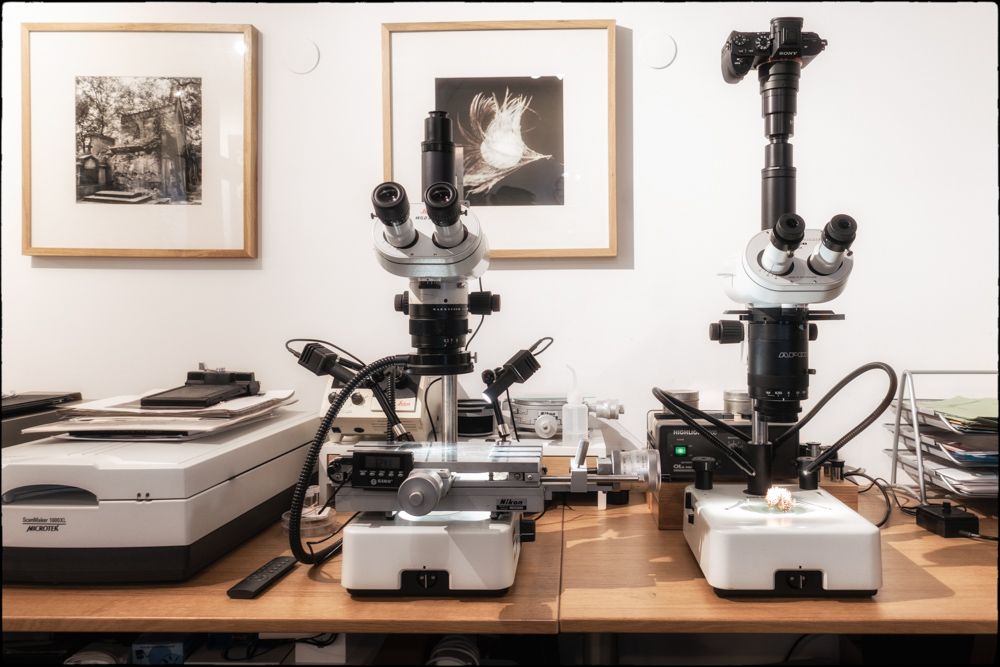 |
|